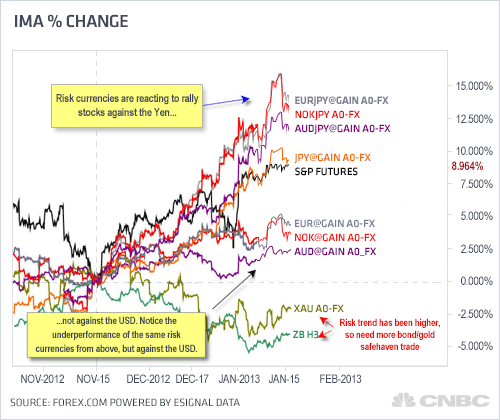The following is a guest post by CNBC Contributor Todd Gordon.
The Australian unemployment report was released at -5.5K, missing the consensus reading of 2.3K and producing a net loss of 7.8kKexpected jobs to the economy. However, the prior reading was revised higher from 13.9K to 17.1K, adding 3.2K jobs back into the economy. So the net impact is approximately 4.6K jobs lost over the last two reports.
I still hold to the view that this not enough evidence that a rate cut at the Reserve Bank of Australia's February meeting is warranted. As I said onFast Money last night, the RBA is already at credit-crisis lows in interest rates, and in such a proactive, accommodative central bank environment with an improving Chinese economy, the RBA knows the weakness is probably short-lived.
So, AUD/USD still remains morbidly range bound since mid-2011, despite a sharp rally in global equities and interest rates. Why? The answer lies not in the base currency of that pair (Aussie), but in the counter currency position (USD).
Traders, this percentage change overlay chart is a very good illustration of exactly what's going on with the typical safe haven currencies during this risk-on rally. S&P futures are now in a clear uptrend, having broken out from our focus 1471 level in the pre-market GLOBEX trading. But if you're wondering why our favorites like AUD/USD, USD/NOK, and to a lesser degree EUR/USD don't seem to be responding to the upside rally in the S&P futures like they should be, here's the reason. Those same currencies (Euro, Aussie, and Norway) are in fact rallying and reflecting the risk-on sentiment of the January rally - only the rally is taking place against the yen and not the USD.




